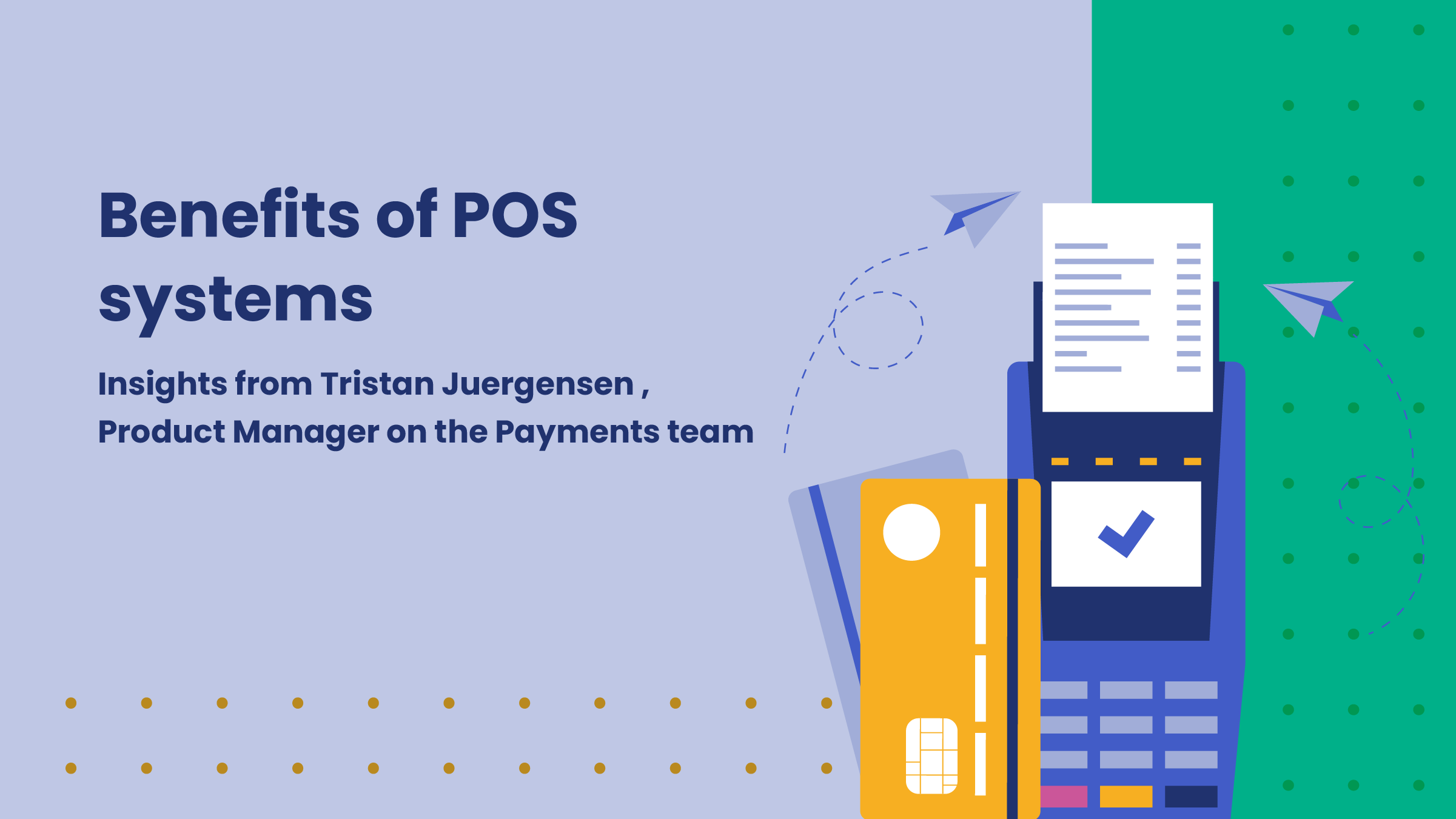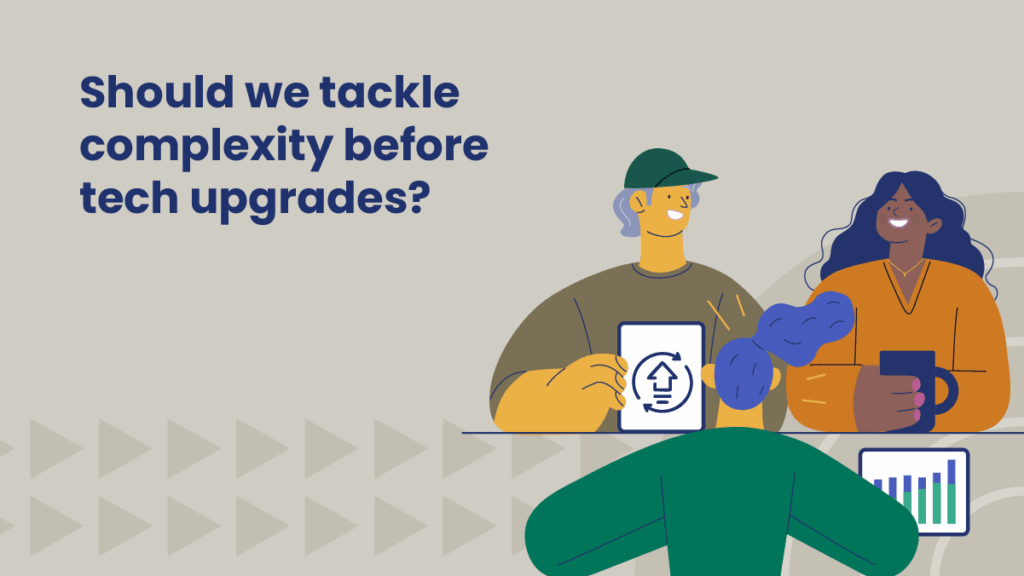What’s a point-of-sale device? And why should government agencies have one?

PayIt employees are sharing their insights in a 2023 series of blogs. Each post in this series will be written by our teammates — showcasing the talent, expertise, and positive attitude that each PayIt employee brings to the company.
This post was written by PayIt’s marketing team with insights from Tristan Juergensen, a Product Manager on the Payments team. Tristan has been with PayIt for a little over a year. Tristan works with PayIt’s Engineering and Design teams to create feature enhancements and upgrades for our Payment Adoption products.
Government agencies and residents contend with enough friction day to day — bill payment shouldn’t add to those struggles. And although digital payments continue to rise in popularity, government agencies still capture a fair amount of in-person payments.
To meet this need, PayIt offers an efficient and low-barrier payment option for residents who may not have access to computers and smartphones for online payments or prefer to visit an agency office in person. A point-of-sale (POS) gives agencies a way to accept in-person payments securely and quickly.
What is a point-of-sale?
A POS is a device that processes transactions in person — think a cash register, but upgraded. POS systems combine hardware and software to manage resident purchases, accept payments, and provide receipts.
PayIt POS consists of a card terminal device and our proprietary software, an easy-to-use cashier interface, and a straightforward checkout workflow. Setup of the card terminal and the software is a breeze, allowing agencies to seamlessly integrate and begin taking point-of-sale payments.
Benefits of POS systems
You might wonder why a modern GovTech company (????????) is so excited about offering a great in-person payment experience. It’s because we know that a POS solution enables agencies to meet the needs of residents who prefer to make payments in person.
Residents can interact with the POS system, and it equips government agencies with reporting capabilities. Transactions are simple for residents and record-keeping is streamlined for staff — which leads to a better payment experience.
Key POS benefits
A better user experience is just one benefit of modern POS systems. Here are a few more advantages POS devices offer:
Greater security
Thanks to data tokenization and encryption, modern POS systems reduce the risk of fraud. PayIt also takes on the burden of PCI compliance for every POS device (which can save an agency anywhere from $5 to $10 a transaction, an added bonus).
Convenience
Residents want choices, and modern POS devices give them options. They can accept a wide variety of payment types such as a mobile wallet (e.g., Apple Pay and Google Pay), contactless, and chip cards. And residents can pick between an emailed or printed receipt, so they can keep track of their records in the way that best works for them.
Simple device management
Software updates, compliance, and card network updates are simple and quick with modern, cloud-based POS systems.
Reduced delinquency
When you make it possible for residents to choose their preferred payment method, it increases payment acceptance, leading to higher agency revenue and lower payment delinquency.
Reduced office wait times
POS card terminals are quick and efficient at taking a wide variety of payments, helping to reduce the time it takes customers to complete transactions — cutting down in-office wait times and freeing up agents to help more customers.
POS payment types
Did you know that 58% of respondents in our recent study said they want more choice when it comes to payment methods? Along with offering them options online, there are several ways to pay using a POS device:
- Magstripe (swipe)
The original and traditional way of paying with a card. A swiped transaction is a quicker, but less secure, way to pay at the point of sale. - EMV (dip/chip card)
EMV cards, also card chip cards, store cardholder information on a metallic chip instead of in a magnetic stripe. EMV payments are more secure, thanks to the encryption and tokenization of card data via the chip. - Contactless/Tap to Pay
Contactless payments are made via EMV chip cards that utilize Near Field Communication (NFC) to initiate payment. Because NFC-transmitted card data is tokenized, the account holders are protected as their primary account number is never transmitted to the device. - Mobile/Digital Wallet
Residents can use their smartphones or smartwatches to make payments from their mobile wallet by “waving” their mobile wallet device over the card terminal, which will transmit the card data via the NFC connection. By 2023, digital wallets are expected to account for almost 30% of POS payments, and we’re prepared: PayIt POS accepts Apple Pay and Google Pay mobile wallets.
All PayIt POS devices have the ability to take all four of these payment types, offering flexibility and security to your residents.
POS devices: What to look for
If your agency is ready to invest in a new POS system, there are several things you should look for:
- PCI compliance: This should be your first requirement when selecting a POS device. Any organization or company that processes cardholder data must be PCI compliant.
- Payment processing options: You want a card reader that will allow your agency to accept multiple payment types, whether that’s a chip card, a magnetic stripe card, or contactless.
- Reporting capabilities: Real-time data helps agencies understand their residents’ transactions. Detailed reports can tell you information such as how residents are paying their bills and if payments are made on time (or not).
- Receipts: It sounds simple, but most residents will want a receipt for their payment — and if they’re paying in person, the likelihood of them wanting a printed receipt is higher. Make sure you can offer them receipt options.
- Support and training: When you pick a POS device, your agency is essentially entering into a partnership. Look for a vendor that offers guidance and training as necessary.
There are a wide variety of card terminal companies and device types. PayIt POS utilizes the Ingenico Lane/3000, a cutting-edge retail PIN Pad that features heavy-duty magstripe and smartcard readers optimized to boost transaction speeds. With its modern design and compact size, this device integrates seamlessly into any environment, including semi-unattended kiosks.
It’s fully compliant with the latest global and local PCI Regulations and features world-class encryption technology to keep data safe. Agencies and residents alike can be assured that payment information is secure.
A modern POS system gives your residents and your agency more control.
For the foreseeable future, there will always be some residents who prefer to pay in person. The right POS helps those folks feel secure in their payments. And the simple transaction process ensures speed of service, so your employees aren’t overwhelmed.
We’re proud to say that PayIt’s POS solution provides:
- Real-time data that your agency can act on to improve service delivery
- Support and training for staff
- Multiple payment options for residents
Looking for more content?
Get articles and insights from our monthly newsletter.




